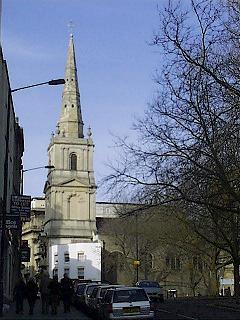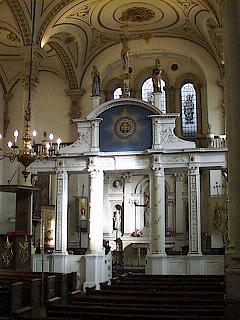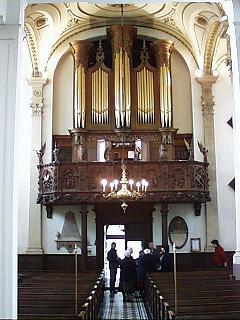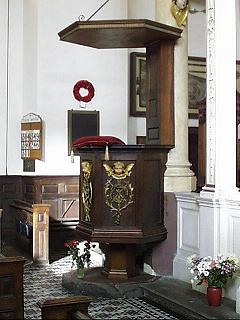|
Christ Church, known in the twelfth century as
Holy Trinity, was one of the three crossroads churches - the
others being St Ewen's and All Saints - but lies at the apex of
the north-east quadrant and may therefore represent an extension
northwards from the probable (?tenth-century) planned Anglo-Saxon
town.
A fair was held at the feast of Holy Trinity in
the twelfth century at Bristol, where the church of Holy Trinity,
with Norman, if not Saxon fabric, is recorded from 1147.
The 18th century was a time of change. Christ
Church, which had existed for hundreds of years on this Wine
Street/Broad Street corner, was demolished and a new church built
on the site to William Paty's design.
The nearby church of St Hoyan or Ewen in Corn Street had been
closed, (it was pulled down in 1820 for the Council House) so that
dedication was combined with it. Hence the rather clumsy title of
Christ Church with St Ewen.
The interior of the church has a particularly fine gilded ceiling.
The organ was recently rebuilt.
|







